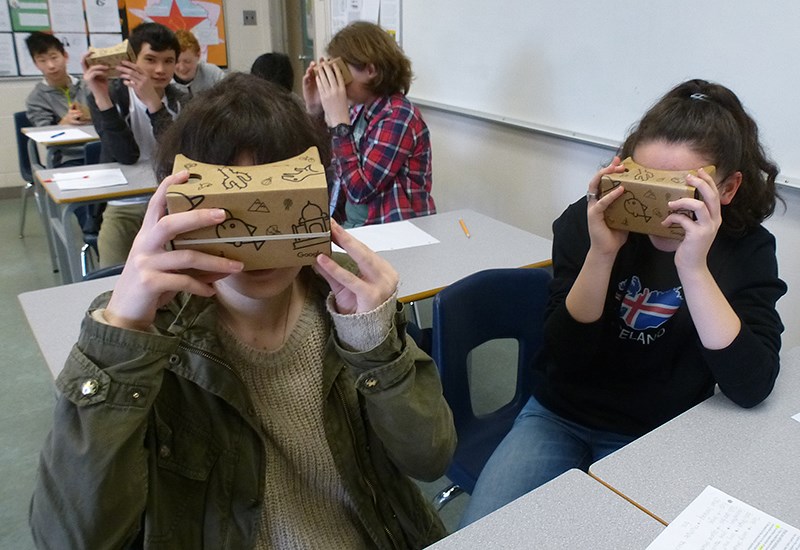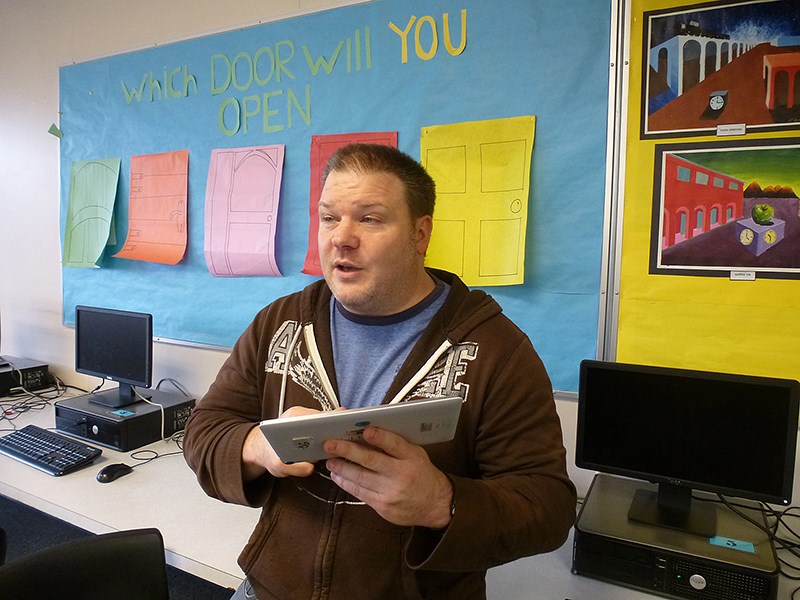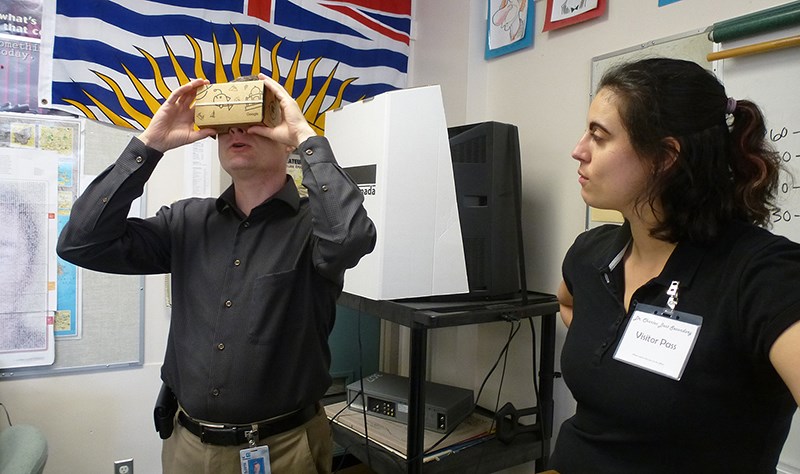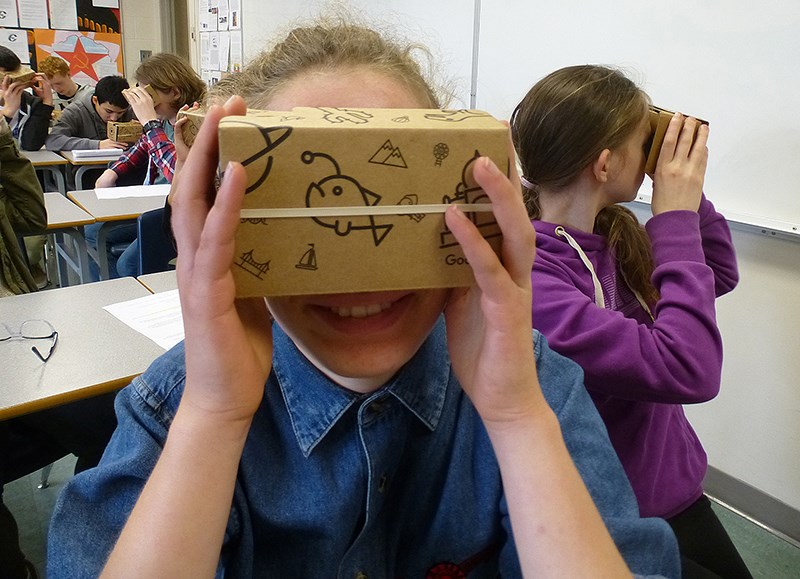Students at Dr. Charles Best secondary got to swim in a shark tank, visit the pyramids of Giza and Machu Picchu, and stand on the moon — without leaving the classroom.
Google brought its new virtual reality (VR) technology and pilot program Pioneer Expeditions to the Coquitlam school, giving students the chance to visit museums, wildlife preserves and national treasures without having to get on a plane or a bus.
"They've approached us from a purely education point of view," said teacher Sean O'Reilly, who contacted Google for the opportunity. "It's fantastic. They have pre-lessons, they have post-lessons and each one of the expeditions can integrate into the curriculum teachers are teaching. It used to be video but now you learn about it and you can go inside it."

The class begins when students put on a pair of cardboard goggles — called Google Cardboard — with a smart phone inserted. An app splits the image in two — one for each eye — while the cardboard headgear has lenses that counter distortion, providing a stereoscopic 3D image.
Instantly, students said they felt immersed in a shark cage; their eyes soaked up a 360-degree view of the ocean and sharks while a teacher using the Expeditions app on a tablet directs them to new images, such as a collection of fish or rock formations.
In another "expedition" of space, the viewer gets the sensation of standing at the edge of the universe, looking at the Milky Way and Earth. In other tours, some of the images are dizzying, as well as beautiful. A tour of Machu Picchu, for example, brought students to the edge of a cliff, and O'Reilly told students to take a break if they felt sick.

Most students seemed to be engaged and interested in the experience.
Watching the students and teachers move their bodies and their heads to get the full experience was like spying on a group of impressionistic dancers.
There are 200 expeditions to choose from, including museums and natural environments, made with the co-operation of institutions such as the American Museum of Natural History and the Palace of Versailles.
In addition to 360-degree panoramic views, the expeditions include video, ambient sounds and detailed explanations of the sights‚ much like you would find in a bricks-and-mortar museum.

Stephen Whiffin, School District 43's director of instruction for technology, who also tried the Google Cardboard, said he sees a bright future for virtual reality in education, with students eventually learning how to develop their own 3D projects.
"It opens up a whole new world with students getting involved in the creation process without things they would need in the physical world," Whiffin said, giving the example as a VR model of a space craft that could be tested using a variety of materials and conditions. "You could see if it flies in virtual space."
There ere are costs involved, although the pilot is free. Google Cardboard is relatively inexpensive and can be made according to Google's specifications, but the app needs smartphones to work, which could be costly unless students bring their own from home, which many do.
Still, there are possibilities, according to O'Reilly, who is developing a virtual reality game at home using 3D animation and modelling software. He would like to purchase a few of the Expedition sets and sees a lot of potential, especially in career education, where students can experience different professions.
"I think the technology is fantastic but always the strength lies in the content," he said. "When the content gets integrated into the curriculum, that's what makes it innovative with regards to education."
Next week, Dr. Charles Best teachers will be meeting to discuss how the technology can be used in their own programs.
And while it may be a while before students attend VR schools, this week's experiment hints at the possibility for the future.



